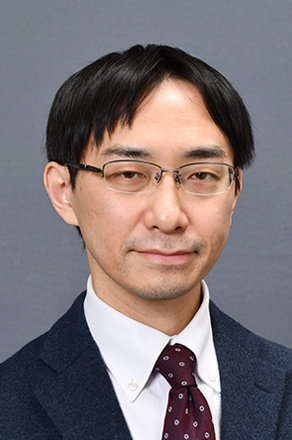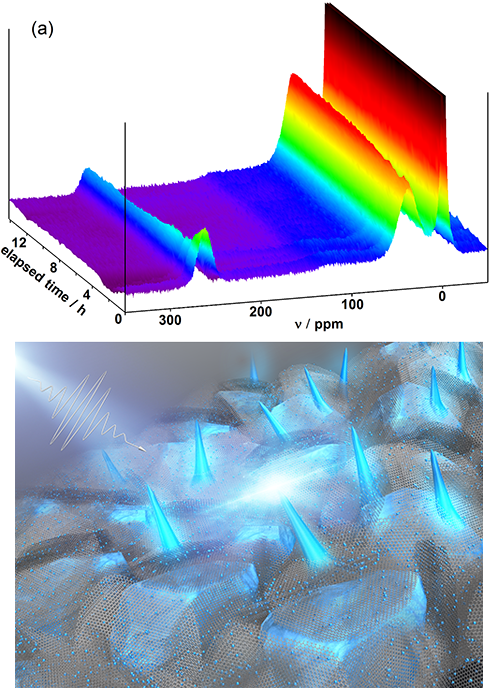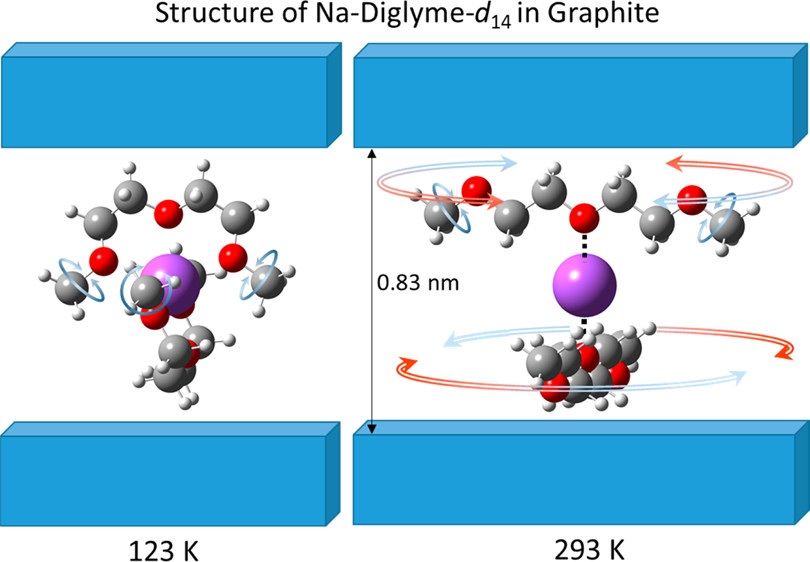
Nanospace Chemistry
― Development of observation technology and controlling nanostructure ―
Laboratory on Solid-State Nanochemistry
Professor:GOTOH Kazuma
E-mail:
[Research areas]
Physical Chemistry, Inorganic material chemistry
[Keywords]
Nuclear magnetic resonance, Carbon materials, Lithium ion batteries, Sodium ion batteries, in situ, operando analysis
Skills and background we are looking for in prospective students
Basic knowledge of physical chemistry and inorganic chemistry is preferred. Motivation for learning basic skills and exploring novel phenomenon is required.
What you can expect to learn in this laboratory
You will be engaged in experiments of material preparation, measurements using analytical equipment, and discussion about the experimentally obtained results. Thereby, you will learn skills about synthesis of inorganic materials, testing batteries, and analyses of materials using analytical methods such as solid state nuclear magnetic resonance (SSNMR). Furthermore, students will be trained through discussion to make great insights necessary to understand scientific phenomena: this capability for insight is most important for researchers and engineers.
【Job category of graduates】
Researcher and engineer in manufacturing (chemistry, material, automobile, battery) or at research institutes
Research outline

Reprinted from 1) K.Gotoh et al., Carbon (2014). (upper), and 2) publication 1. (lower).
Our group emphasizes understanding of microscopic and mesoscopic structures and circumstances in nanospace of porous and layered materials such as carbon and inorganic compounds. The states and behaviors of molecules and ions in the nanospace are investigated using several analytical methods, especially solid state nuclear magnetic resonance (SSNMR). Because understanding of these technologies is essential for revealing the mechanisms of devices using the materials such as secondary batteries, we prospectively apply our technology to the development of such materials.
"Reaction mechanism of lithium and sodium in electrode materials for next generation secondary batteries"
Lithium ion batteries (LIBs) are commonly used as indispensable energy storage systems for consumer electronics and vehicles. Sodium insertion materials have also attracted much attention for use in sodium ion batteries (NIBs), which are anticipated as a favorable alternative to LIBs because of their abundant resources and comparable electrode potential to that of LIBs. For LIB and NIB development, elucidating the states of the lithium and sodium ions and the charging–discharging mechanism of the electrodes is indispensable. We are investigating the states of lithium and sodium in several electrode materials such as hard carbon, phosphorous, and layered 2D materials using 7Li and 23Na SSNMR (including in situ and operando measurements) to develop next-generation secondary batteries. Our research is aimed at developing methods to analyze the structures of electrodes and the states of lithium and sodium in batteries, and to reveal lithium and sodium reaction mechanisms in electrode materials.

Reprinted from K.Gotoh et al., J. Phys. Chem C (2016).
"Intercalation chemistry of inorganic layered compounds"
Inorganic layered materials such as graphite intercalated compounds (GICs) are anticipated for several applications such as electrochemical devices, catalysts, superconducting materials, and precursors of thin film materials. We are studying the syntheses and properties of new GICs and layered materials intercalating alkali metal cations (Li+, Na+, or K+) and several organic molecules, which are anticipated for use as electrode materials or catalysts. The structures and dynamics of intercalant molecules are investigated using X-ray diffraction and SSNMR to elucidate the interaction between intercalants and host materials. These analyses are crucially important for understanding the intercalation chemistry of new materials and the diffusion properties of alkali metals in 2D layers.
Key publications
- Dynamic nuclear polarization -nuclear magnetic resonance for analyzing surface functional groups on carbonaceous materials. H. Ando, K. Suzuki, H. Kaji, T. Kambe, Y. Nishina, C. Nakano, K. Gotoh*, Carbon, 206, 84 (2023).
- Mechanisms for overcharging of carbon electrodes in lithium-ion/sodium-ion batteries analysed by operando solid-state NMR. K. Gotoh*, T. Yamakami, I. Nishimura, H. Kometani, H. Ando, K. Hashi, T. Shimizu and H. Ishida, J. Mater. Chem. A 8, 14472 (2020).
- Combination of solid state NMR and DFT calculation to elucidate the state of sodium in hard carbon electrodes. R. Morita, K. Gotoh*, M. Fukunishi, K. Kubota, S. Komaba, T. Yumura, N. Nishimura, K. Deguchi, S. Ohki, T. Shimizu and H. Ishida, J. Mater. Chem. A 4, 13183 (2016).
Equipment
Bruker AVANCE NEO 400MHz solid-state NMR (with PFG system), Bruker AVANCE III 500MHz NMR (with SSNMR system containing in situ equipment)
X-ray diffractometer, X-ray photoelectron spectroscope, Thermal analyzer, Electron microscope, Gas adsorption analyzer, Electrochemical measurement devices, Cell assembly equipment (glovebox, etc.)
Teaching policy
I hope students will acquire both fundamental background as members of society and high expertise as specialists of physical and inorganic chemistry.
Seminars and group meetings in laboratories are held regularly. Each student should make a plan and have a schedule of their own experiments. Participating in collaborative research with other groups or companies is preferred for obtaining a wide scope for research.
[Website] URL:https://www.jaist.ac.jp/nmcenter/labs/gotoh-www/home-en